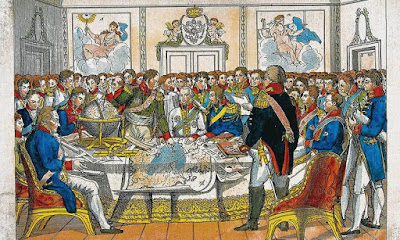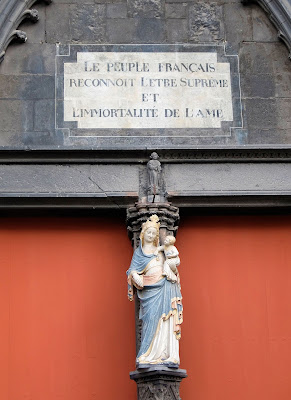
|
|
Frederick inspecting the harvesting of his favorite staple food that the farmers subserviently present to the "potato king." |

|
|
Frederick, on the eve of the Battle of Torgau (1760) that he, nearly
lost. Dreamily, he observes a country lass boiling potatoes on an open fire. Did the miracle tuber save Frederick's upcoming day? |
Following the white asparagus season ending at Sankt Johannis (June 24), restaurants in the Freiburg region seamlessly continue with Brägel weeks at the beginning of July before the chanterelle season takes over. Brägel is not to be confused with Brägele, which are generally considered like Bratkartoffeln (home fries) as served in northern Germany. And then there are still the Rösti in Switzerland.
Let us work on the difference between all these delicious potato dishes and start with Brägel. Brägel are made from thinly grated boiled potatoes formed into a patty, seasoned with pepper and salt, and baked in a pan on both sides using Schmalz (lard).

|
| Brägel (©Hochschwarzwälder Brägelwochen 2015) |

|
| Rösti (©Wikipedia/Musskelprozz) |

|
| Brägele with Wiener Schnitzel (©fudder) |

|
|
Here are Bratkartoffeln (home fries) I had in Hamburg last year
with gebratene Pfifferlinge (chanterelles sautées) served with Rührei (scrambled eggs). |
*






























